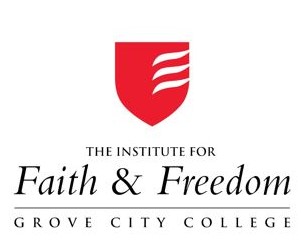The GOP’s Challenge: The Unspeakable “C-Word”

Despite encouraging news in Senate and House elections scattered across the country, the 2020 returns did little to shake the GOP’s recent status as near-perennial, popular-vote, presidential losers.
In the last eight White House contests (going all the way back to Bill Clinton’s first race in 1992), Republicans have won the popular vote only once – with the hard-fought re-election of George W. Bush sixteen years ago.
Amazingly, this period of Democratic dominance followed two decades of consistent Republican triumphs: between 1968 and 1988, the GOP swept five of six contests, including two different 49-state landslides (for Nixon in ’68 and Reagan in ‘84). Republicans achieved such predictable success in presidential battles that liberal pundits and prognosticators spoke commonly about an unbreakable GOP “lock” on the Electoral College.
So how did Democrats pick that lock, to change Republican presidential candidates from overlords to under-achievers?
The answer involves a single word that’s become nearly unspeakable in conservative circles – the dreaded C-word: California.
Today, political analysts take California’s liberal orientation so much for granted that they merely shrug at the inevitable Democratic victories. California looks no more competitive for Republicans than Wyoming does for Democrats: Trump won an astonishing 70% in the “Cowboy State” while polling a truly pathetic 34% in the “Golden State.” The difference is that Wyoming (population 580,000) provides three electoral votes while California (population 40 million) delivers 55 – enough on its own to powerfully shape the outcome of most presidential races. Had Trump carried California this year, even narrowly, he would have won re-election with a comfortable margin of 287 electoral votes – even allowing for Biden’s narrow wins in Arizona, Georgia, Wisconsin, Pennsylvania and Michigan. Had he won the Golden State in back in 2016 – or even tied Hillary there – he would have won the popular vote, as well as the electoral college.
The most depressing factor for GOP strategists trying to steer the party’s future prospects is to consider California’s largely forgotten history as the most crucial element in the Republican Party’s modern-day success. For one thing, California candidates dominated national tickets (in the person of Earl Warren, Richard Nixon and Ronald Reagan), with eight nominations for either President or Vice President between 1948 and 1984. Moreover, the Golden State provided a near-automatic advantage for GOP nominees, who carried California in nine of ten elections, from Eisenhower through George Herbert Walker Bush – losing only in the Barry Goldwater debacle in 1964, when the Cactus Conservative carried only his native Arizona and five Southern states.
In other words, for forty years, the electoral prize that became the most populous state in the Union in 1962, fell as easily and effortlessly into the Republican column as does Alabama or, well, Wyoming today. It’s worth remembering that California used to be as predictably Republican as it’s been consistently Democratic in every presidential election since ’92.
So, what changed to switch the color of California from reliably red to unfailingly blue?
Obviously, demographics played a role: as census statistics demonstrate, California followed Hawaii some twenty years ago as the second state in which non-Hispanic whites constituted a minority. In the 2020 election, President Trump made significant gains with Hispanic voters elsewhere in the nation (especially in Florida), but still performed miserably among California Latinos – losing that 34% of the electorate to Biden by a crushing margin of 77-21%. He also lost the state’s significant Asian-American vote by a similar ratio of 76-23%.
But the most important contribution to the overwhelming defeat of the Trump-Pence ticket in California came among non-Hispanic whites, who still represent the largest single ethnic segment (47%) of the state’s voters. There, Biden-Harris prevailed by a solid margin of 53-45%. In other words, Trump would have lost the state decisively even if non-white voters had never showed up at the polls at all.
It’s worth pondering why Republicans lost the white vote in California when they prevailed in that group by a significant advantage (58 to 41%) in the nation at large. The Golden State under-performance for this year’s ticket involves an abject failure with independents voters (62-32%) and even among self-identified Republicans, where Biden drew 11% of their votes (compared to the meagre 2% of California Democrats that Trump won to his cause). Suburban voters (nearly half of the state’s electorate), tilted toward Biden by 60 to 38% – similar to his final, statewide edge.
In other words, despite local success in winning back a few Congressional seats in 2020 (the delegation now stands at 42 Democrats and 11 Republicans), California continues to look like a one-party fiefdom where GOP candidates are doomed to play the role of also-rans in any statewide competition.
There are no easy solutions for Republican presidential candidates in 2024 or beyond – whether Trump again, or Nikki Haley, or Tom Cotton or Ben Sasse, or some yet unheralded conservative messiah – to overcome the California challenge to the Republican future. But it should be clear that the GOP candidates will build no new winning streak unless they manage to compete more viably in the nation’s largest state that played such a crucial part in past Republican success.




















